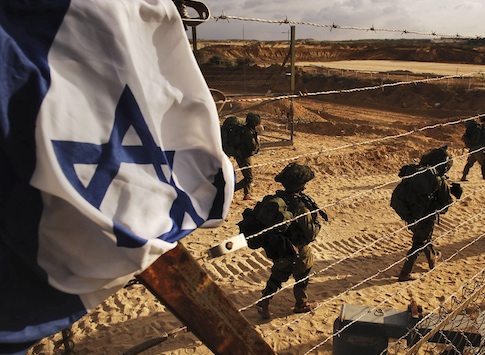JERUSALEM—Even as war rattles much of the Middle East, Israel is in the process of trimming its armed forces because of budgetary constraints and a reappraisal of the military challenges it faces.
The daily Yediot Achronot reported Monday that four months will be cut from the three years of military service required of 18-year-old draftees—a length of service fixed more than half a century ago. In addition, tens of thousands of soldiers in the reserves, who train for a month every year, will no longer be called up.
Israel does not reveal the overall size of its armed forces but foreign experts estimate that there are some 180,000 men and women in the standing army and 550,000 in the reserves. (Women are drafted for 21 months.)
Defense Minister Moshe Yaalon, who ordered the current round of cutbacks, expects them to be completed by 2018. A former army chief of staff, Yaalon has said that modern warfare no longer requires Israel to put masses of soldiers into the field; instead, the country relies on a smaller, more sophisticated, army.
Israel radically expanded its armed forces after the 1973 Yom Kippur War when it was caught by a surprise, two-front attack by Egypt and Syria. Staggered by the assault, Israel lost three times as many men per capita in 18 days of fighting as the United States lost in Vietnam in a decade. Traumatized, it hastily formed new armored units, increasing the number of tank brigades from 20 to 33. It also greatly expanded the reserve forces, which constitute 70 percent of its combat echelons. For many years, the Israel Defense Forces (IDF) focused on preparing itself for another Yom Kippur War.
Eventually, this came to be seen as both too costly and unnecessary. "More tanks are not the solution," said Yaalon, when he was chief of staff.
Instead of forming new tank units—increasingly vulnerable to efficient new anti-tank weapons—the IDF invested heavily in new technology. The air force remained a mainstay of its combat potential but the ground forces became smaller and more nimble.
In recent years, the prospect of another conventional, large-scale ground war in the Middle East has come to be seen as unlikely. Both the Syrian and Iraqi armies, which constituted a major threat to Israel’s eastern front, have been paralyzed by civil wars and any recovery is seen as distant. As for Egypt, it is too consumed by internal problems to constitute a serious threat in the near future. Although Israel still has thousands of tanks, its battlefield performance today rests heavily on precision munitions delivered by artillery and aircraft, as was demonstrated extensively in last summer’s war in Gaza.
The major danger Israel faces today is from rockets and missiles. Hezbollah in Lebanon is reported to have more than 100,000 such weapons, provided by Iran and Syria. New types of units have been formed by Israel to deal with this threat. These include teams that man Iron Dome anti-rocket batteries that were highly successful in the Gaza War, and a Home Front Command, which would deal with the impact of missiles on Israel’s cities. Another unit deals with the major new threat of cyber warfare.
In addition to a "significant" cutback in the standing army (made up of draftees) and the reserve forces, the reorganization also affects the relatively small cadre of career soldiers—fewer than five percent of all military personnel—who make up the command and administrative backbone of the IDF. In little more than a year, some 4,500 of these "regulars" have been released from service.
